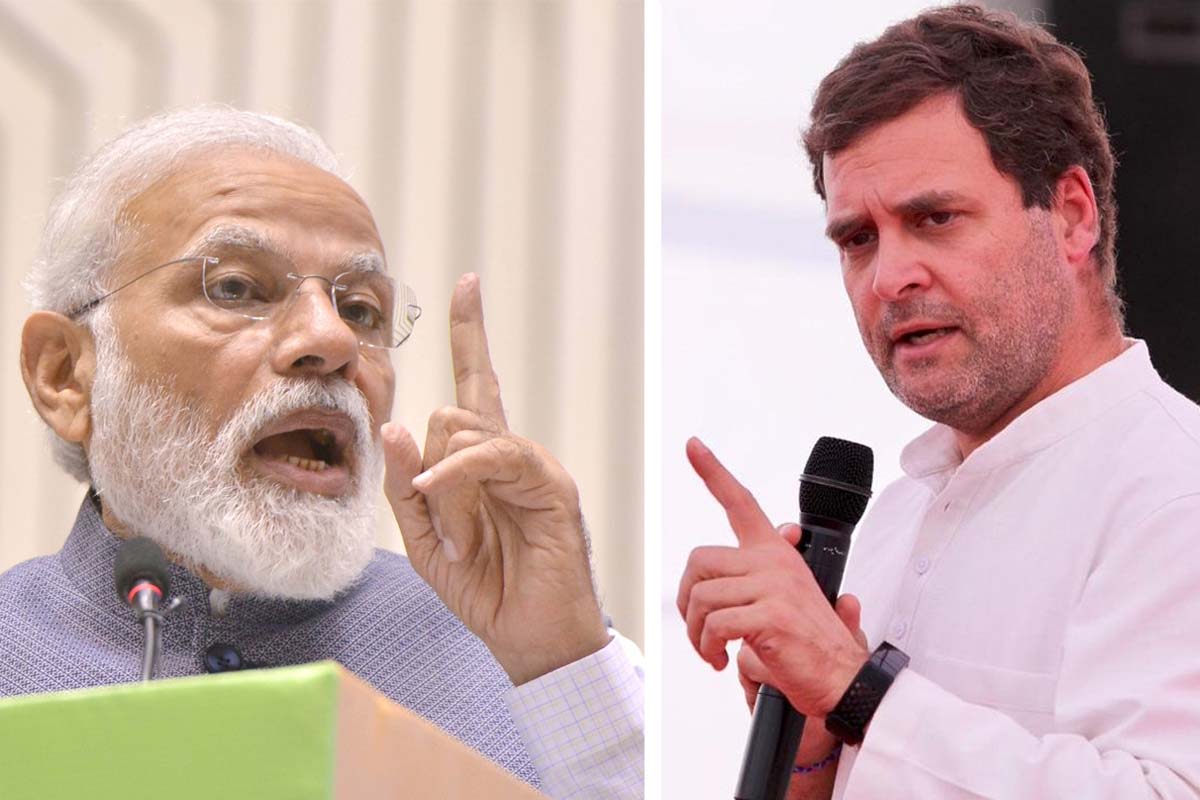PM nominates Omar Abdullah, nine other personalities to lead fight against obesity
In his 'Mann Ki Baat' programme on Sunday, the PM had exhorted people to take measures to curb the health menace.
Polling for the election spread over seven phases, beginning on 19 April and ending on 1st June.

Photo: IANS
In spite of multiple exit polls predicting Prime Minister Narendra Modi’s confident return to office for a historic third term, the nation awaits with bated breath the results of the 18th Lok Sabha election on Tuesday, as the Opposition called the exit polls deeply unscientific and not trustworthy.
Polling for the election spread over seven phases, beginning on 19 April and ending on 1st June. Summer had just turned days sultry when election rallies began, but unpredictable heat waves from the middle of May affected attendance at poll rallies and took a toll on quite a few polling personnel due to heat strokes.
Advertisement
The largest electorate in the world, 96.88 crore, was registered to vote for the General Elections to Lok Sabha’s 543 seats. Over 60 per cent of voters turned out to exercise their right of franchise on each of the polling dates, with women outnumbering male voters in many places. The counting of votes and announcement of results will take place on 4th June.
Advertisement
Exit polls surveys were conducted immediately after voters left polling stations, and they were asked which candidate or party they supported. Nearly all the exit polls estimated 355 to 370 seats for the BJP-led NDA and between 125 and 140 seats for the Congress and its allies in INDIA.
The exit polls showed the BJP making entry into Tamil Nadu and Kerala and getting good support in Andhra Pradesh and Telangana.
Congress President Mallikarjun Kharge claimed his party’s estimate was that INDIA would get 295 seats and this estimate was based on feedback from “janta” (people).
As electioneering progressed, the campaign turned quite acrimonious, with rival parties attacking each other on their credentials of governance, rather than their track record of performance and promises spelled out in party manifestoes.
The main contenders in the polls were the ruling BJP-led National Democratic Alliance (NDA), led by the prime minister, and the Indian National Developmental Inclusive Alliance (INDIA), a political alliance of major political parties led by the Indian National Congress.
The prime minister, from the beginning, was confident of getting another term in office to take forward his vision of Viksit Bharat (developed India) by 2047 forward. He told the people about the achievements of his government in the 10 years of its two terms, holding out the promise of “Modi Guarantee” to secure social justice for all, without any discrimination.
A special feature of Mr Modi’s campaigns across the country was his dialogue with the electorate on the coverage of his government’s welfare initiatives. His objective was to identify gaps and to ensure complete saturation of the welfare schemes among the deserving population. The Prime Minister announced that free rations would continue for the 80 crore beneficiaries in the next term of his government also.
Mr Modi could easily compare his achievements with the record of the 10-year Congress rule under former Prime Minister Manmohan Singh and show the vast difference. This gave the people a good opportunity to weigh their options well and think before they vote.
While attacking Congress and its INDIA allies, the prime minister initiated a virtual debate on the reservation issue, questioning a precedent in Karnataka under a Congress government to assign reservation benefits “on the basis of religion” to Muslims.
Different INDIA partners, on the other hand, attacked each other on crucial days during the election phases, and a common strand of the Opposition parties’ campaign was that the incumbent BJP government at the Centre had failed to control inflation and joblessness, and it was nearly impossible for a “North India party” like the BJP to get any acceptance in the South.
The announcement of the Sikkim and Arunachal Pradesh Assembly poll results on Sunday proved a morale booster for the PM-led BJP.
In Sikkim, incumbent Sikkim Krantikari Morcha (SKM), a part of the BJP-led NDA, returned to power, winning 31 out of the total 32 seats. The Opposition Sikkim Democratic Front won just one seat.
In Arunachal Pradesh, led by Chief Minister Pema Khandu, the BJP won 46 of the total 60 Assembly seats, improving on its 2019 record of 41 seats.
Advertisement